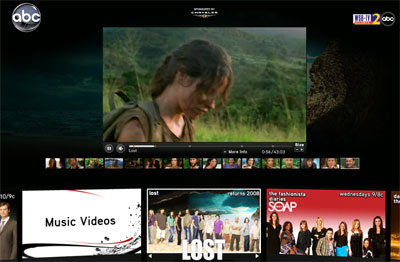
In the early days of streaming media-- the mid-to-late 1990s-- enjoying videos and listening to music online wasn't constantly fun. It was a little like driving in stop-and-go traffic throughout a heavy rain. If you had a slow computer system or a dial-up Internet connection, you might spend more time staring at the word "buffering" on a status bar than enjoying videos or listening to songs. On top of that, everything was choppy, pixilated and tough to see.
Streaming video and audio have actually come a long way considering that then. According to Bridge Ratings, 57 million individuals listen to Internet radio each week. In 2006, people enjoyed more than a million streaming videos a day on YouTube [source: Reuters] The same year, tv network ABC started streaming its most popular TELEVISION shows over the Web. Individuals who missed an episode of programs like "Lost" or "Grey's Anatomy" could catch up on the whole thing online-- legally and free of charge.
The success of streaming media is pretty current, but the concept behind it has been around as long as people have. When somebody speak with you, details travels towards you in the form of an acoustic wave. Your ears and brain decode this info, allowing you to understand it. This is likewise what takes place when you view TELEVISION or listen to the radio. Information takes a trip to an electronic device in the type of a cable television signal, a satellite signal or radio waves. The device translates and displays the signal.
In streaming video and audio, the traveling info is a stream of information from a server. The decoder is a stand-alone player or a plugin that works as part of a Web internet browser. The server, information stream and decoder collaborate to let people view live or prerecorded broadcasts.
In this post, we'll explore what it takes to produce this stream of ones and absolutely nos along with how it differs from the information in a typical download. We'll also have a look at how to make great streaming media files.
Contents
Finding and Playing Streaming Video and Audio
A video for "" The Mesopotamians" "by They Might Be Giants plays in an ingrained Flash gamer at stereogum.com. A video for "The Mesopotamians" by They Might Be Giants plays in an embedded Flash gamer at stereogum.com. f you have a connection to the Web and you wish to find streaming video and audio files, you should not need to look far. Noise and video have become a common part of websites all over the Web, and the procedure of using these files is pretty user-friendly. You discover something you wish to watch or hear-- you click it, and it plays. Unless you're enjoying a live feed or a webcast, you can typically pause, back up and move on through the file, similar to you could if you were viewing a DVD or listening to a CD.

However if you have actually never used streaming media, your computer might require a little help to decipher and play the file. You'll require a plugin for your Web browser or a stand-alone player. The majority of the time, the Websites you've visited points you in the best instructions. It triggers you to download a particular gamer or shows you a list of options.
These gamers translate and display data, and they normally obtain information a little faster than they play it. This extra info remains in a buffer in case the stream falls back. There are four primary gamers, and every one supports particular streaming file formats:
QuickTime, from Apple, plays files that end in.mov.
RealNetworks RealMedia plays.rm files.
Microsoft Windows Media can play a couple of streaming file types: Windows Media Audio (. wma), Windows Media Video (. wmv) and Advanced Streaming Format (. asf).
The Adobe Flash gamer plays.flv files. It can likewise play.swf animation files.
For the most part, these players can't decipher one another's file formats. For this factor, some websites utilize lots of different file types. These sites will ask you to select your favored gamer or select one for you instantly.
The QuickTime, RealMedia and Windows Media gamers can work as stand-alone players with their own menu bars and controls. They can also work as browser plugins, which resemble mini variations of the major gamer. In plugin mode, these players can look like an integrated part of a Web page or pop-up window.
Flash video is a bit various. It normally needs a Flash applet, which is a program created to decode and play streaming Flash files. Programmers can write their own Flash applets and customize them to fit the needs of here a specific Web page. Flash is becoming a more popular option for playing streaming video. It's what YouTube, Google Video and the New York Times all use to display videos on their sites. The video listed below, which shows what would occur if you shot your TELEVISION, plays in a Flash applet. Despite whether it's an applet or a totally practical gamer, the program playing the streaming file disposes of the information as you see. A complete copy of the file never exists on your computer, so you can't save it for later. This is different from progressive downloads, which download part of a file to your computer, then allow you to view the rest as the download finishes. Because it looks a lot like streaming media, progressive downloading is likewise understood as pseudo-streaming. These gamers and applets do what lots of applications do-- they play files. We'll take a look at these files and how they take a trip to your computer system in the next area.